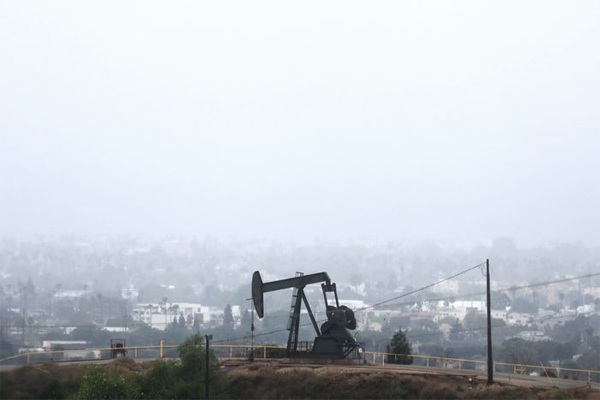
Myra P. Saefong and William Watts, MarketWatch
SAN FRANCISCO
EnergiesNet.com 04 07 2022
Oil futures settled at their lowest in three weeks on Wednesday, with U.S. prices ending below the $100 mark, following news that the International Energy Agency plans to release 120 million barrels from crude reserves and as data revealed an unexpected climb in U.S. crude supplies.
Price action
- West Texas Intermediate crude for May delivery CL.1, 1.42% CL00, 1.42% CLK22, 1.42% fell $5.73, or 5.6%, to settle at $96.23 a barrel on the New York Mercantile Exchange.
- June Brent crude BRN00, +0.57% BRNM22, +0.57%, the global benchmark, lost $5.57, or 5.2%, ending at $101.07 a barrel on ICE Futures Europe. Brent and WTI marked the lowest front-month contract settlements since March 16, FactSet data show.
- May gasoline RBK22, 2.19% declined by nearly 3.8% at $3.046 a gallon.
- May heating oil HOK22, 1.23% lost nearly 3.6% to $3.345 a gallon.
- May natural gas NGK22, 0.91% settled at $6.029 per million British thermal units, down a fraction of a cent. It gave up all of its earlier gains after trading as high as $6.394.
Market drivers
The International Energy Agency is moving ahead with a collective oil stock release of 120 million barrels from emergency reserves, Fatih Birol, IEA’s executive director tweeted Wednesday. The release includes 60 million barrels from the U.S., as part of that country’s overall draw from its Strategic Petroleum Reserve.
The Biden administration last week said it would release 1 million barrels per day from the U.S. SPR for the next six months in a move to ease high gasoline prices, for a total of 180 million barrels. Traders had been awaiting details from the IEA, which had said last week that its members would release reserve oil.
The U.S. and its allies on Wednesday unveiled new sanctions on Russia over its invasion of Ukraine, including a ban on all new investment in the country. Russian President Vladimir Putin’s two adult daughters are also targeted.
The European Union, however, has held off on joining the U.S. and U.K. in banning Russian oil imports.
“The biggest concern is Europe stops doing business with Russia . This could lead crude and natural gas to trade significantly higher,” Tariq Zahir, managing member at Tyche Capital Advisors, told MarketWatch.
Still, EU officials have indicated that talk of a phaseout of Russian oil and natural gas was likely to increase. Measures on “oil and even gas will also be needed sooner or later,” Charles Michel, president of the European Council, told the European Parliament on Wednesday.
The EU is “keeping this sharpest sword in its armory of sanctions in reserve for now,” said Carsten Fritsch, commodity analyst at Commerzbank.
Crude prices extended their losses as the U.S. dollar rallied following minutes of the Federal Reserve’s March meeting, which “showed a strong commitment to fighting inflation,” said Edward Moya, senior market analyst at OANDA, in a market update.
Top U.S. oil company executives, meanwhile, defended themselves Wednesday at a House hearing on gasoline price gouging.
U.S. natural-gas prices were on track to settle Wednesday at their highest since January, but gave up all of their gains to finish nearly flat.
Prices traded as high as $6.394, which would’ve marked the highest finish since December 2008. They still trade more than 5% higher for the week.
“Headlines regarding a blast of cold weather hitting most of the eastern half of the U.S. this weekend…served as the bullish catalyst for the natural gas market’s rally this week as demand estimates rose considerably in response,” Tyler Richey, co-editor at Sevens Report Research, told MarketWatch.
“Geopolitical angst surrounding the Ukraine war, domestic inventories hovering well below the 5-year average, implied production expectations declining, and a lack of reinvestment by E&P companies to increase output” have also contributed to the bullish fundamental backdrop, he said.
Supply data
The Energy Information Administration reported on Wednesday that U.S. crude inventories rose by 2.4 million barrels for the week ended April 1. That followed declines in each of the previous two weeks.
On average, the EIA was expected to show crude inventories down by more than 1.85 million barrels, according to analysts surveyed by S&P Global Commodity Insights. The American Petroleum Institute reported late Tuesday that U.S. crude supplies rose by 1.1 million barrels last week.
The EIA reported a weekly inventory decline of 2 million barrels for gasoline, but distillate stockpiles edged up by 800,000 barrels. The analyst survey showed expectations for weekly supply declines of 350,000 barrels for gasoline and 700,000 barrels for distillates.
The EIA data showed crude stocks at the Cushing, Okla., Nymex delivery hub edged up by 1.7 million barrels for the week, but stocks in the Strategic Petroleum Reserve fell by 3.7 million to 564.6 million barrels last week.
marketwatch.com 04 06 2022












